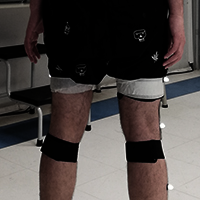Validation of a portable system for spatial-temporal gait parameters based on a single inertial measurement unit and a mobile application

Accepted: 23 May 2020
HTML: 55
All claims expressed in this article are solely those of the authors and do not necessarily represent those of their affiliated organizations, or those of the publisher, the editors and the reviewers. Any product that may be evaluated in this article or claim that may be made by its manufacturer is not guaranteed or endorsed by the publisher.
Authors
There is a lack of commercially available low-cost technologies to assess gait clinically in non-controlled environments. As a consequence of this, there has been poor massification of motion measurement technologies that are both objective and reliable in nature. Advances about the study of gait and its interpretation in recent years using inertial sensors have allowed proposing acceptable alternatives for the development of portable and low-cost systems that contribute to people’s health in places and institutions that cannot acquire or maintain the operation of commercially available systems. A system based on a custom single Inertial Measurement Unit and a mobile application is proposed. Thus, an investigation is carried out using methodologies and algorithms found in the literature in order to get the main gait events and the spatial-temporal gait parameters. Twenty healthy Chilean subjects were assessed using a motion capture system simultaneously with the proposed tool. The results show that it is possible to estimate temporal gait parameters with slight differences respect gold--standard. We reach maximum mean differences of -2.35±5.02[step/min] for cadence, 0.03±0.04[sec] for stride time,0.02±0.03[sec] for step time, ±0.02[sec] for a single support time, 0.01±0.02[sec] for double support time and 0.01±0.03[m] for step length. As a result of experimental findings, we propose a new technological tool that can perform gait analysis. Our proposed system is user-friendly, low-cost, and portable. Therefore, we suggest that it could be an attractive technological tool that healthcare professionals could harness to objectively measure gait in environments that are either within the community or controlled. We also suggest that the tool could be used in countries where advanced clinical tools cannot be acquired. Therefore, we propose in this paper that our system is an attractive, alternative system that can be used for gait analysis by health professionals worldwide.
Supporting Agencies
ANID Chile, Preclinical and Clinical Sciences Department, Faculty of Medicine, Universidad Católica de la Santísima ConcepciónHow to Cite
PAGEPress has chosen to apply the Creative Commons Attribution NonCommercial 4.0 International License (CC BY-NC 4.0) to all manuscripts to be published.

 https://doi.org/10.4081/ejtm.2020.9002
https://doi.org/10.4081/ejtm.2020.9002



